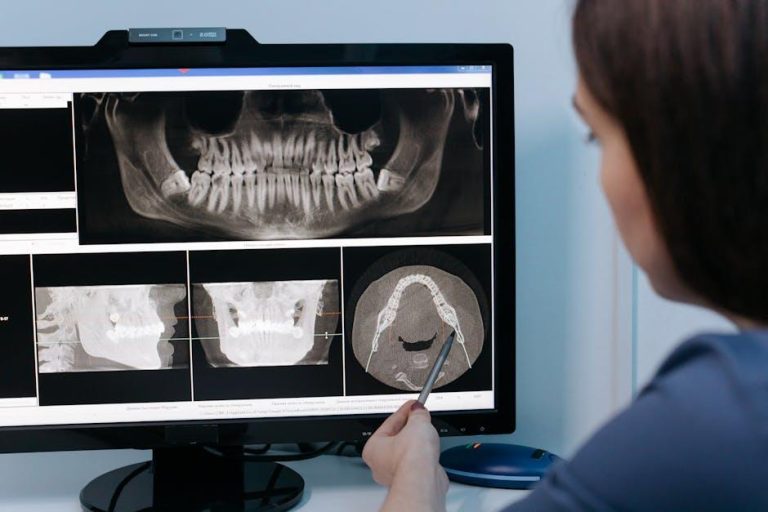
Dental Imaging Tech Boom: AI & 3D Scanners Reshaping the $6B Market
The dental industry is witnessing an unprecedented transformation fueled by advances in technology — chiefly Artificial Intelligence (AI) and 3D imaging scanners. The global dental imaging technology market, valued at approximately $6 billion, is rapidly evolving and expanding as digital dentistry takes center stage. This exciting boom enhances diagnostic accuracy, improves patient outcomes, and streamlines dental practice workflows. In this article, we’ll dive into how AI and 3D scanning technologies are revolutionizing dental imaging, explore the benefits, highlight real-world case studies, and offer practical tips for dental professionals looking to harness these innovations.
The Rise of AI in Dental Imaging
Artificial Intelligence is no longer just a buzzword in healthcare; it has become instrumental in enhancing dental diagnostics. AI algorithms can analyze X-rays, CT scans, and intraoral images with incredible precision, identifying anomalies that may be challenging for the human eye to detect promptly.
Key AI Applications in Dental Imaging
- Automated Detection: AI-powered tools detect cavities, periodontal disease, and abnormalities in real-time, reducing diagnostic errors.
- Treatment Planning: AI assists in crafting personalized treatment plans by simulating outcomes and predicting risks.
- Workflow Optimization: Streamlines image analysis, allowing dentists to save time and focus more on patient care.
- Integration with EHRs: AI syncs imaging results with electronic health records for seamless patient management.
3D Scanning Technology: Shaping the Future of Dentistry
3D scanners, ranging from cone beam CT (CBCT) to intraoral scanners, are revolutionizing how dentists visualize and interact with the patient’s anatomy. Unlike traditional 2D X-rays, 3D scans offer volumetric imaging revealing intricate details of teeth, bone, and soft tissues.
Popular Types of Dental 3D Scanners
| Scanner Type | Primary Use | Benefits |
|---|---|---|
| CBCT (Cone Beam Computed Tomography) | 3D bone & soft tissue imaging | Detailed, low-radiation, ideal for implants & endodontics |
| Intraoral Scanners | Digital impressions of teeth & gums | Accurate, fast, patient-friendly alternative to molds |
| Optical 3D Scanners | Surface topography for orthodontics & prosthetics | High precision surface details for custom appliances |
Benefits of AI and 3D Scanners in Dentistry
Incorporating AI and 3D scanning technology offers multiple advantages for dental professionals and patients alike:
- Enhanced Diagnostic Accuracy: Detects dental problems earlier and more reliably.
- Improved Patient Experience: Faster, non-invasive imaging reduces discomfort.
- Personalized Treatment: Enables custom treatment plans with better predictability.
- Reduced Chair Time: Streamlined workflows mean shorter appointments and less waiting.
- Cost Efficiency: Reduces unnecessary procedures and repeat imaging.
- Documentation and Compliance: Digital records support legal documentation and insurance claims.
Real-World Case Studies
Case Study 1: AI-Assisted Cavity Detection
A prominent dental clinic integrated AI software that analyzes bitewing radiographs for early-stage cavities. Within six months, cavity detection rates increased by 25%, allowing for timely interventions and reducing the need for extensive restorations. Patient satisfaction scores also improved significantly due to minimally invasive treatments.
Case Study 2: 3D Scanners in Implantology
A dental implant specialist utilized CBCT imaging combined with intraoral scanners to create highly accurate surgical guides. The use of 3D imaging reduced surgical time by 30% and increased implant success rates from 92% to 98%, demonstrating the profound impact of precise imaging on clinical outcomes.
Practical Tips for Dental Practices Adopting These Technologies
- Invest in Training: Ensure your team is well-trained on AI platforms and 3D scanners to maximize benefits.
- Start Small: Pilot AI diagnostics or 3D scanning on a few cases before full integration.
- Collaborate with Tech Providers: Work closely with vendors to customize technology for your clinic’s needs.
- Focus on Patient Education: Explain new imaging tools to patients to enhance their trust and acceptance.
- Keep Compliance in Mind: Maintain data privacy standards and properly store digital imaging data.
The Future Outlook for the $6B Dental Imaging Market
The dental imaging technology market is projected to continue its strong growth trajectory, driven by:
- Advancements in AI algorithms improving diagnostic precision and predictive analytics
- Increasing adoption of 3D intraoral and CBCT scanners in general and specialty dentistry
- Growing demand for minimally invasive and patient-centric dental treatments
- Technological integration with tele-dentistry and mobile health platforms
This ongoing tech boom not only elevates standards of dental care but also opens lucrative opportunities for manufacturers, dental practices, and tech innovators alike.
Conclusion
AI and 3D scanning technologies are reshaping the $6 billion dental imaging market in remarkable ways. From enhancing diagnostic accuracy to improving patient comfort and workflow efficiency, these tools present a compelling future for modern dentistry. Dental professionals embracing these innovations will benefit from improved treatment outcomes and streamlined operations, while patients can look forward to a more precise, personalized dental care experience. Staying informed and ready to adopt these advancements will be critical for practitioners aiming for success in the rapidly evolving landscape of dental technology.


